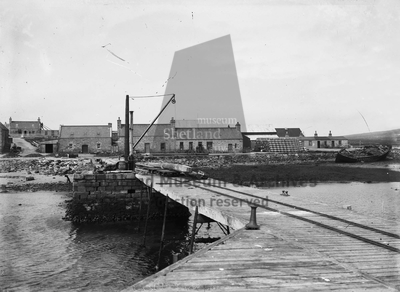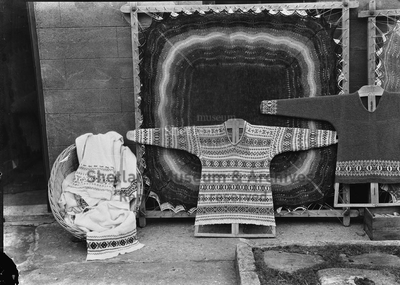I wrote about James Moar in a previous post, an invalided man who turned to knitting (even though he thought it to be women’s work) in order to support himself. We know him to be invalided due to a letter he wrote along with his first delivery of knitwear but we never managed to work out what had caused it, the recording of his former occupation being indecipherable.
I felt the need to complete his story in the hope that finding other records might shed a light on his condition.
James Thomas Irvine Moar was born on the 22nd July 1856 in Sandwick, North Yell, to parents John Moar, a sailor, and Margaret Robertson. He was the youngest of John and Margaret’s seven children, with quite an age gap between himself and his oldest sister Christina, who was 19 when he was born, and trusted with the job of registering his birth on the official register.
Not long after James’ birth, the family moved to Unst and were living in Underhoul in 1861 and 1871. His father, John, dies at the age of 68, on 20th February 1875. This is likely the trigger for the family to move to Uyeasound, and for James to consider how he can help support the family rather than be a drain on them.

The White House is Cugg, Uyeasound, Unst.
Photo by Rhoda Hughson
In 1876, when James writes the letter, he has had some occupation, but something has happened to cause him to become invalided. In the 1881 census he lives with his widowed mother and two sisters in Cugg, Uyeasound, Unst, and has the indecipherable occupation listed that he was formerly employed in.

Map showing the direction the photo of Cugg was taken. Click on the map to go to the zoom-able version on the NLS website

Fine Lace Shetland Shawl
Photo Source: Shetland Museum
Soon after this he started knitting, and continues to live in Cugg with his sisters and his widowed mother, who dies on 15th December 1896. His sisters spin him wool to knit with, and he keeps at this new occupation, as we see him recorded as a knitter in 1891, and as a lace knitter, a more complex knitting task, in 1901 and 1911.
I had hoped that finding his death record might shed some light on his condition even if nothing else did. I finally located him with some difficulty. He died in the Combination Poorhouse in Lerwick on 10th November 1919. His death was registered by the Governor of the Poorhouse who didn’t know who James’ parents were, so his death record does not record his parents. He is noted as having had Chronic Bronchitis for the past 30 years, which is not really long enough to have been the cause of his invalid condition back in 1876, although it is possible that the Governor is guessing at the duration.

Combination Poorhouse, Lerwick
Photo Source: Shetland Museum
However, it is easy to tell that it is him none-the-less, the record shows him with a usual residence in Uyeasound, Unst and an occupation of Lace Knitter. There is only one!
We’re still no closer to finding any additional information about his former occupation that might help with the indecipherable text on the 1881 census, but now we know a bit more about James.

A book of lace knitting patterns from the Unst Heritage Centre
James is being immortalised this month in a new knitting pattern book produced by the Unst Heritage Centre. It is available to purchase from the Unst Heritage Centre website, having been launched during Wool Week at the Unst Heritage Centre.
Now that this post is published, I have sent the details to the General Register of Scotland corrections so that James’ parents can be recorded.
EDIT: The corrections I submitted are now live.












